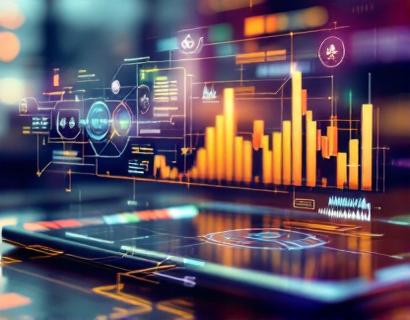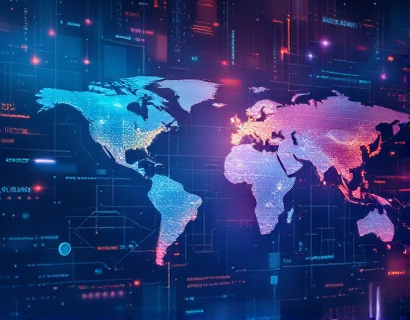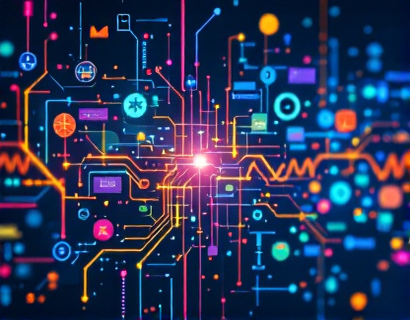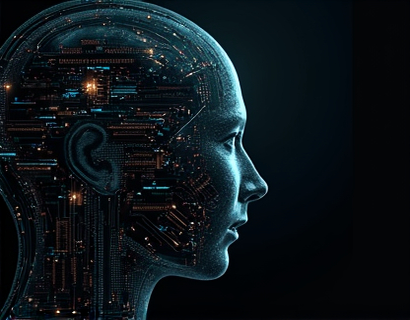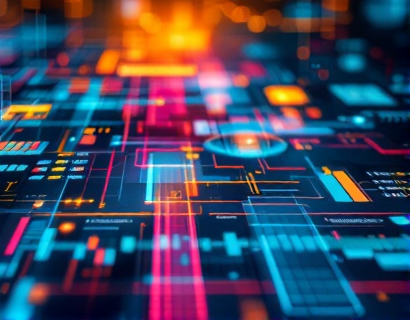Exploring the Synergy of Crypto and AI: Transforming Digital Experiences
The intersection of cryptocurrency and artificial intelligence (AI) is giving rise to groundbreaking innovations that are redefining the digital landscape. This convergence is not just about combining two advanced technologies but about creating a synergy that enhances user interactions, drives growth, and opens new avenues for engagement in the tech sector. As we delve into this topic, we will explore how these technologies are being leveraged to create more intuitive, secure, and efficient digital experiences.
Understanding the Basics: Cryptocurrency and AI
To fully appreciate the impact of this convergence, it's essential to understand the fundamentals of both cryptocurrency and AI. Cryptocurrency, often referred to as digital or virtual currency, uses cryptography for security and operates on a decentralized network known as a blockchain. This technology ensures transparency, immutability, and security in transactions, eliminating the need for intermediaries like banks.
Artificial intelligence, on the other hand, involves the simulation of human intelligence processes by machines, particularly computer systems. These processes include learning (the acquisition of information and rules for using it), reasoning (using rules to reach approximate or definite conclusions), and self-correction. AI can operate autonomously or be integrated into existing systems to enhance their functionality.
The Convergence: How Crypto and AI Complement Each Other
The integration of AI into cryptocurrency systems brings a multitude of benefits. AI algorithms can analyze vast amounts of data to predict market trends, optimize trading strategies, and enhance security measures. For instance, machine learning models can identify patterns in historical data to forecast price movements, providing traders with valuable insights. This predictive capability is crucial in the volatile crypto market, where timing can be everything.
Moreover, AI can significantly improve the security of cryptocurrency transactions. By employing advanced algorithms, AI systems can detect and prevent fraudulent activities, such as money laundering and identity theft. Smart contracts, self-executing contracts with the terms directly written into code, can be enhanced with AI to ensure that all conditions are met accurately and securely, reducing the risk of errors and disputes.
Enhanced User Interactions Through AI-Driven Interfaces
One of the most exciting aspects of the crypto and AI convergence is the development of more intuitive and user-friendly interfaces. AI-powered chatbots and virtual assistants are becoming increasingly common in crypto platforms, providing users with real-time support and guidance. These AI-driven interfaces can understand natural language, handle complex queries, and offer personalized recommendations, making the user experience more seamless and engaging.
Furthermore, AI can analyze user behavior and preferences to tailor the interface and features to individual needs. For example, a crypto exchange can use AI to recommend specific coins or trading strategies based on a user's past activities and market trends. This level of personalization not only enhances user satisfaction but also increases platform stickiness and user retention.
Blockchain and AI: A Powerful Duo for Decentralized Applications
The combination of blockchain and AI is particularly potent in the development of decentralized applications (dApps). dApps leverage the transparency and security of blockchain while utilizing AI to provide sophisticated functionalities. For instance, AI can be used to optimize resource allocation in decentralized networks, ensuring efficient and fair distribution of computational resources. This is particularly important in applications like decentralized finance (DeFi), where smart contracts and automated trading require high levels of precision and reliability.
Another area where blockchain and AI intersect is in data management. Blockchain's decentralized nature ensures that data is distributed and tamper-proof, while AI can handle the complex task of data analysis and insights generation. This synergy can lead to more accurate and secure data-driven decision-making processes, benefiting various industries from finance to healthcare.
Innovative Use Cases: Real-World Applications of Crypto and AI
The potential applications of the crypto and AI convergence are vast and varied. In the financial sector, AI-driven crypto analytics platforms are helping investors make more informed decisions by providing deep insights into market trends and asset performance. These platforms use natural language processing (NLP) to analyze news articles, social media posts, and other textual data to gauge market sentiment and predict price movements.
In the realm of supply chain management, blockchain and AI are being used to create transparent and efficient systems. AI can track and analyze data from various points in the supply chain, identifying bottlenecks and optimizing logistics. Blockchain ensures that all transactions are recorded securely and transparently, reducing the risk of fraud and errors. This combination can significantly enhance the efficiency and reliability of global supply chains.
In the healthcare sector, the integration of crypto and AI is paving the way for secure and privacy-preserving data sharing. AI can analyze medical data to identify patterns and predict disease outbreaks, while blockchain ensures that patient data is stored securely and accessed only by authorized personnel. This not only improves the quality of care but also enhances patient trust in digital health solutions.
Challenges and Considerations
Despite the numerous benefits, the convergence of crypto and AI is not without its challenges. One of the primary concerns is the regulatory landscape. As both technologies operate in relatively uncharted territories, regulatory frameworks are still evolving. Ensuring compliance with existing laws while advocating for supportive regulations is a critical task for developers and businesses in this space.
Another challenge is the technical complexity involved in integrating AI with blockchain systems. Developing robust and scalable solutions requires expertise in both domains, which can be a barrier for many organizations. Additionally, the energy consumption associated with blockchain, particularly proof-of-work systems, raises environmental concerns that need to be addressed.
Future Prospects: The Road Ahead
The future of the crypto and AI convergence looks promising, with ongoing research and development poised to unlock even more innovative possibilities. As AI algorithms become more advanced, we can expect to see more sophisticated applications in areas such as predictive analytics, fraud detection, and personalized user experiences. The integration of AI with other emerging technologies like the Internet of Things (IoT) and 5G networks will further enhance the capabilities of crypto-based systems.
Moreover, the growing adoption of decentralized technologies and the increasing awareness of the benefits of blockchain and AI will drive more businesses to explore this synergy. As the ecosystem matures, we can anticipate the emergence of new standards and best practices, making it easier for developers and organizations to harness the power of crypto and AI.
Conclusion
The convergence of cryptocurrency and artificial intelligence is revolutionizing the digital experience, offering unprecedented levels of security, efficiency, and personalization. By leveraging the strengths of both technologies, we can create more intuitive, secure, and engaging digital solutions. As the field continues to evolve, it is crucial for tech enthusiasts and professionals to stay informed and embrace the opportunities presented by this exciting intersection of innovation.


























